Scoliosis: Bracing
Scoliosis makes a person's spine curve from side to side. Curves can get worse as kids grow and may cause health problems. Health care providers sometimes suggest kids wear a brace while they're growing.
What Is a Scoliosis Brace?
A scoliosis brace is a stiff plastic jacket that fits around the torso, from underneath the arms down to the hips. It has straps to keep it in place and straighten the spine.
A brace is also called an orthotic or orthosis. There are different types. An orthopedist works with parents and their kids to choose the right one. The right brace is the one that works best for the kind of curve a child has. It's also the one a child is most likely to wear.
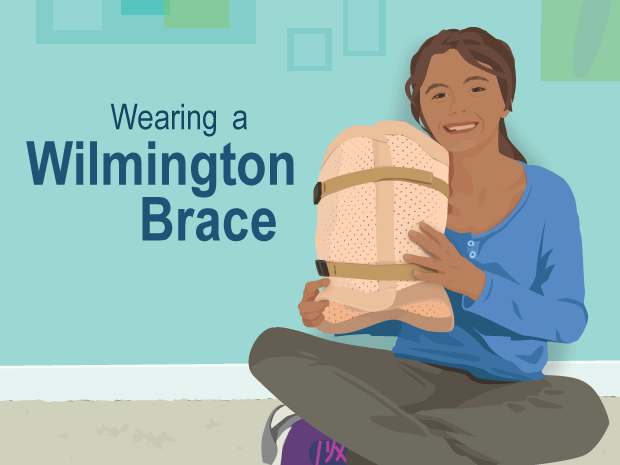
How to Wear Your Wilmington Brace
There are lots of different braces for scoliosis. Some close in the front, others close in the back. This slideshow gives steps on how to put on a Wilmington brace.

What the Wilmington Brace Does
A Wilmington brace stops moderate curves in the middle and lower spine from getting worse. Your orthopedist will tell you how many hours a day you should wear it.
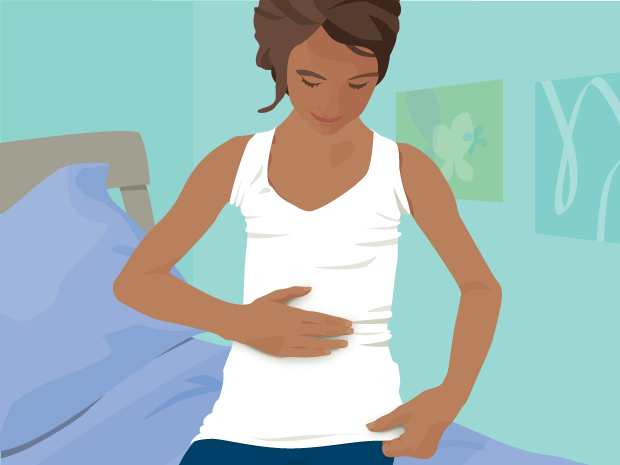
Start With an Undershirt
Wear a tight-fitting, seamless shirt under the brace. This protects your skin and helps with sweat. Make sure your skin is dry before putting on the undershirt. Smooth out the shirt so there are no wrinkles.
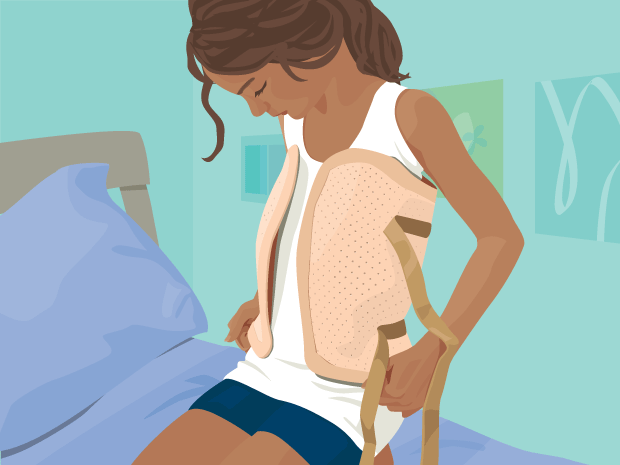
Put on the Brace
The brace is made of flexible plastic so it's easy to open. Separate the edges of the brace at the opening and place it loosely around you.
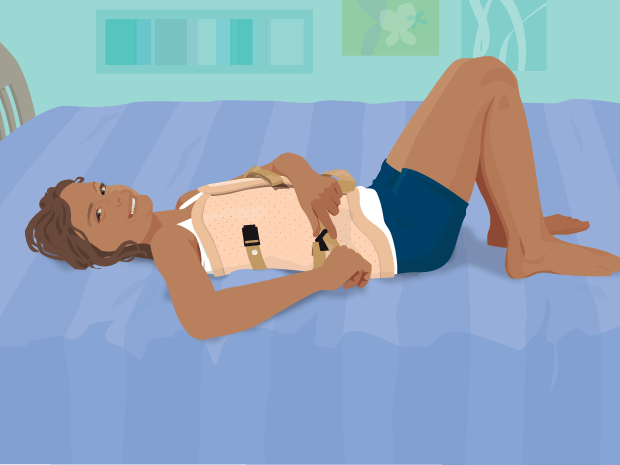
Position the Brace
When the brace is around you, lie down and position your body correctly in the brace. Pull the straps through the buckles, starting at the bottom.
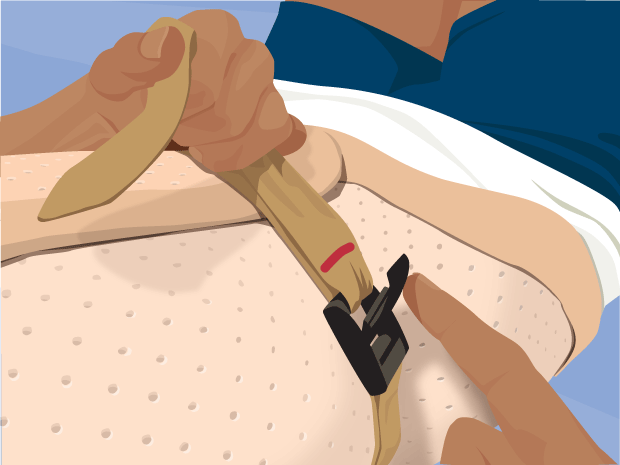
Close the Straps
Your orthopedist made marks on the straps so you know where to close them. Pull each strap through the buckle until the buckle lines up with the mark on the strap. Lock the buckle in place.
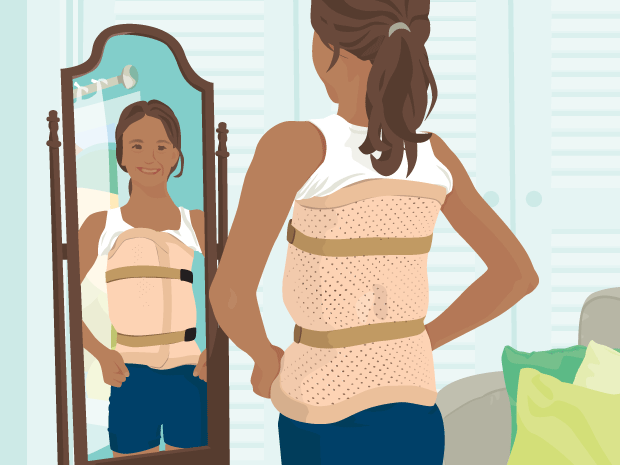
Check the Fit
Your Wilmington brace is molded to fit your body. Because it is custom made, it adjusts the spine in a way that's exactly right for you. Make sure the brace is correctly in place before getting dressed.
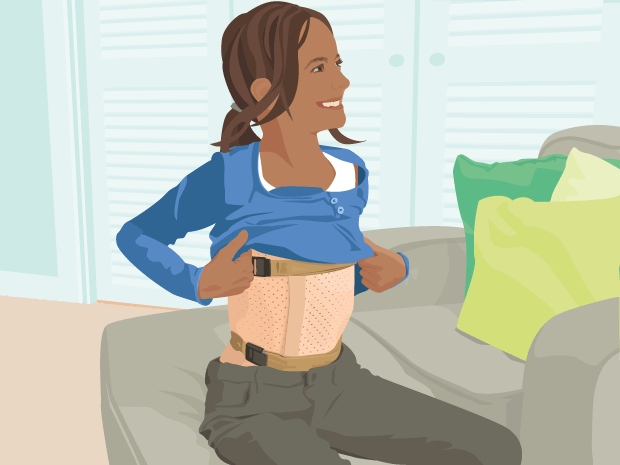
Get Dressed
The Wilmington brace is worn under regular clothes. Some people find that looser fitting tops, like sweatshirts, are most comfortable. You may need to buy clothes in a size larger than you normally wear.
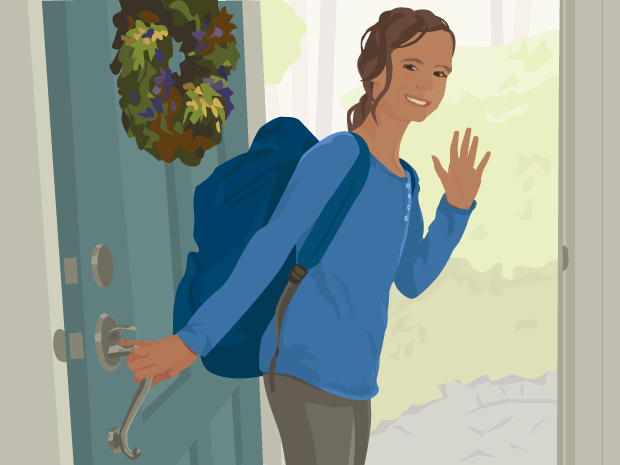
You're Ready to Go!
You'll quickly get used to putting on your new brace. To keep it clean, wipe it once a week with a cotton ball soaked in rubbing alcohol. Other than that, your brace doesn't need any special care.
Why Is Bracing Done?
Wearing a brace is often the first step for kids who need treatment for idiopathic scoliosis. Doctors prescribe a brace hoping it will stop the curve from getting worse and help kids avoid spinal fusion surgery.
How Does Bracing Work?
For bracing to work, a child must still be growing. Before prescribing a brace, orthopedists will check to be sure that a child isn't too far along in growth and development. To do this, they may measure a child's height; ask questions about a girl's periods; or take X-rays of hip, hand, and wrist bones.
Braces don't work on every curve. Bracing won't help if a curve is too big (usually more than 40 degrees). And a brace may not be needed if a curve is too small (less than 20 degrees).
The orthopedic specialist will examine the child and recommend a brace based on the type of scoliosis, how severe it is, and where it is on the spine.
Each child's body and curve are unique, so a brace must be specially made. Your provider will send your child to an to be fitted. Some hospitals have in-house orthotics experts who can make braces in a day. In other cases, it may take a few weeks to make a brace.
As kids grow, orthotists may need to adjust or even replace the brace.
Wilmington Brace and Boston Brace
These jacket-style braces treat moderate curves in the ribcage and lower spine. Both have excellent track records for success and research to back them up.
These braces fit under clothing. They cover the torso from hips to armpits and are made of lightweight rigid plastic. They're made to fit a child's body and use special shaping and padding to adjust the spine's alignment in the brace.
- The Wilmington brace closes in the front and is custom molded to fit each child. An orthotist makes a plaster mold of the child's torso, then uses it to create a brace.
- The Boston brace closes in the back. It's available in many sizes that are customized with pads and cut-outs.
The number of hours per day that kids need to wear a brace can vary, but usually is between 12 and 23 hours.
Rigo-Cheneau Brace
The Rigo-Cheneau brace is a custom plastic brace that is sometimes used with the Schroth method of physical therapy. It has open areas that let the child’s body expand during breathing and exercise.
Charleston Bending Brace
This brace is worn only at night. Like daytime jacket-style braces, it's a solid piece of plastic that holds the back in position. Instead of keeping the person upright, it's shaped to "overcorrect" the curve by keeping the spine bent to one side. Charleston braces usually only help with C-shaped curves in the lower back.
Milwaukee Brace
This is the first type of brace invented to treat scoliosis. Like jacket-style braces, kids wear a Milwaukee brace 12–20 hours a day. It's a solid piece of plastic that fits around the hips and waist with vertical bars in the front and back that attach to a ring around the child's neck. Because it's harder to wear, this brace is rarely used anymore.
SpineCor
This is a more flexible bracing method that uses bands and a cotton vest. Clinical trials haven't shown whether this form of bracing is effective.
How Long Do Kids Wear a Brace?
Bracing works best when a child is growing and before the curve is too big. Bracing ends after a child stops growing. That can take a couple of years. How long kids wear scoliosis braces depends on their curve and when they're done growing.
What Problems Can Happen?
Braces are designed to fit tightly against the body, and that can lead to skin irritation from heat or rubbing. Protecting the skin is important:
- Follow the instructions for cleaning and caring for the brace.
- Be sure your child always wears a thin, tight-fitting, sweat-wicking shirt under the brace.
- Some redness is normal when wearing a brace, but call your doctor's office if:
- Redness doesn't go away within 30 minutes after taking off the brace.
- Your child develops blisters or sores.
- Your child gets a rash under the brace.
A couple of other temporary issues can happen with braces. For example, some kids may not be able to breathe as deeply with the brace on. Or the brace may feel too tight right after eating. But the biggest problem with scoliosis braces is that some kids don't want to wear them.
What If My Child Won't Wear It?
Most kids do well with wearing their brace. But when kids struggle, an understanding parent can make a big difference.
You can make the day-to-day reality of wearing a brace easier just by being there for your child as a supporter and cheerleader.
Encourage your child to come to you when things get tough — and promise you'll just listen. Work together to come up with solutions and incentives to get your child to wear the brace. Creating a schedule or calendar for brace wear throughout the week can help keep families organized and on track.
Your care team is a resource — for you and your child. They know that some kids struggle with wearing a brace at times and can give you tips and ideas on how to handle the challenge.
What Else Should I Know?
What can you expect when your child is finished with bracing treatment? Most kids easily transition to their brace-free life. Sometimes, if they have back pain they might need physical therapy to build up muscle strength. Other than that, kids can return to all their normal activities.

© 1995- The Nemours Foundation. KidsHealth® is a registered trademark of The Nemours Foundation. All rights reserved.
Images sourced by The Nemours Foundation and Getty Images.













